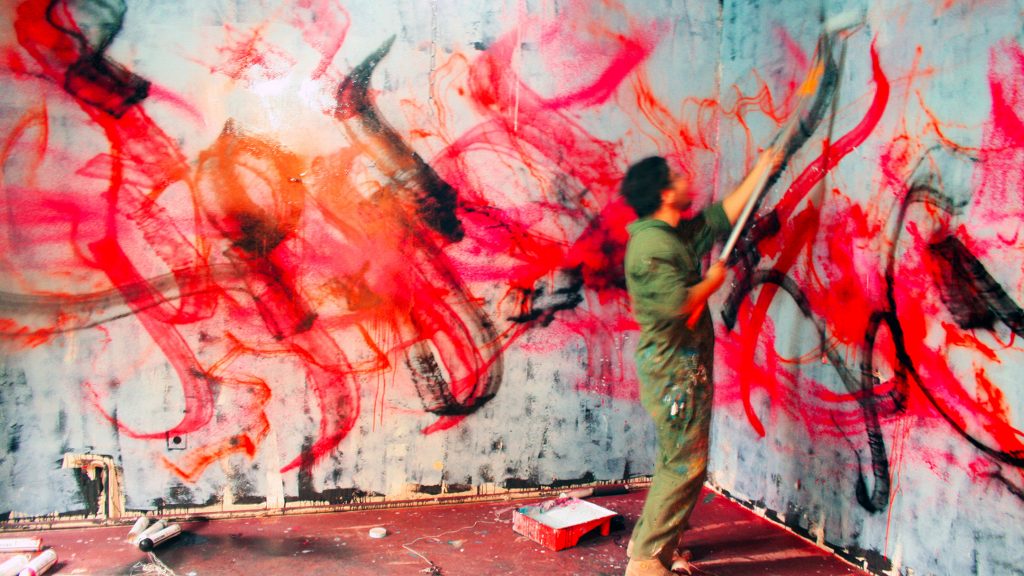The refinement of written language in search of the most beautiful form with which to create works of art is found in many ancient cultures, from traditional Chinese and Japanese calligraphy, to European illuminated manuscripts and Bibles. But nowhere has is developed into a more sophisticated, complex and elaborate art form than in the Arab world. The roots of Arabic calligraphy are entangled with the spread of Islam and the shift from a largely oral culture to one of letters. The refinement of the Arabic script dates back to the first written Quran, and the proliferation of calligraphy as an art form is in part due to a belief among certain communities that to create images of living things was blasphemous, leading them to instead focus on abstract art forms such as geometry and calligraphy.
In the 20th century, an increasing number of painters and artists began to use calligraphy in their work. Traditional Arabic and Islamic calligraphy aimed to communicate the meaning of a text, sometimes creating playful shapes that echoed the message of the writing. But modern artists began to play with the forms of the letters themselves, using them to create abstract patterns. Known as Hurufiyya, this art form marked an attempt to move beyond calligraphy as script and explore its possibilities as pure form, devoid of meaning, creating a meeting point between traditional and modernity while reflecting on history, identity, politics and faith.
Most recently, contemporary Arab street artists have embraced calligraphy in their work, using it as a way to express their identity and celebrate their culture in a world increasingly wracked by Islamophobia. French-Tunisian artist eL Seed is known for his enormous calligraffiti murals. A recent work in Cairo, entitled Perception, is so vast that it covers the side of more than 50 buildings and can only be read in full from a single vantage point.

